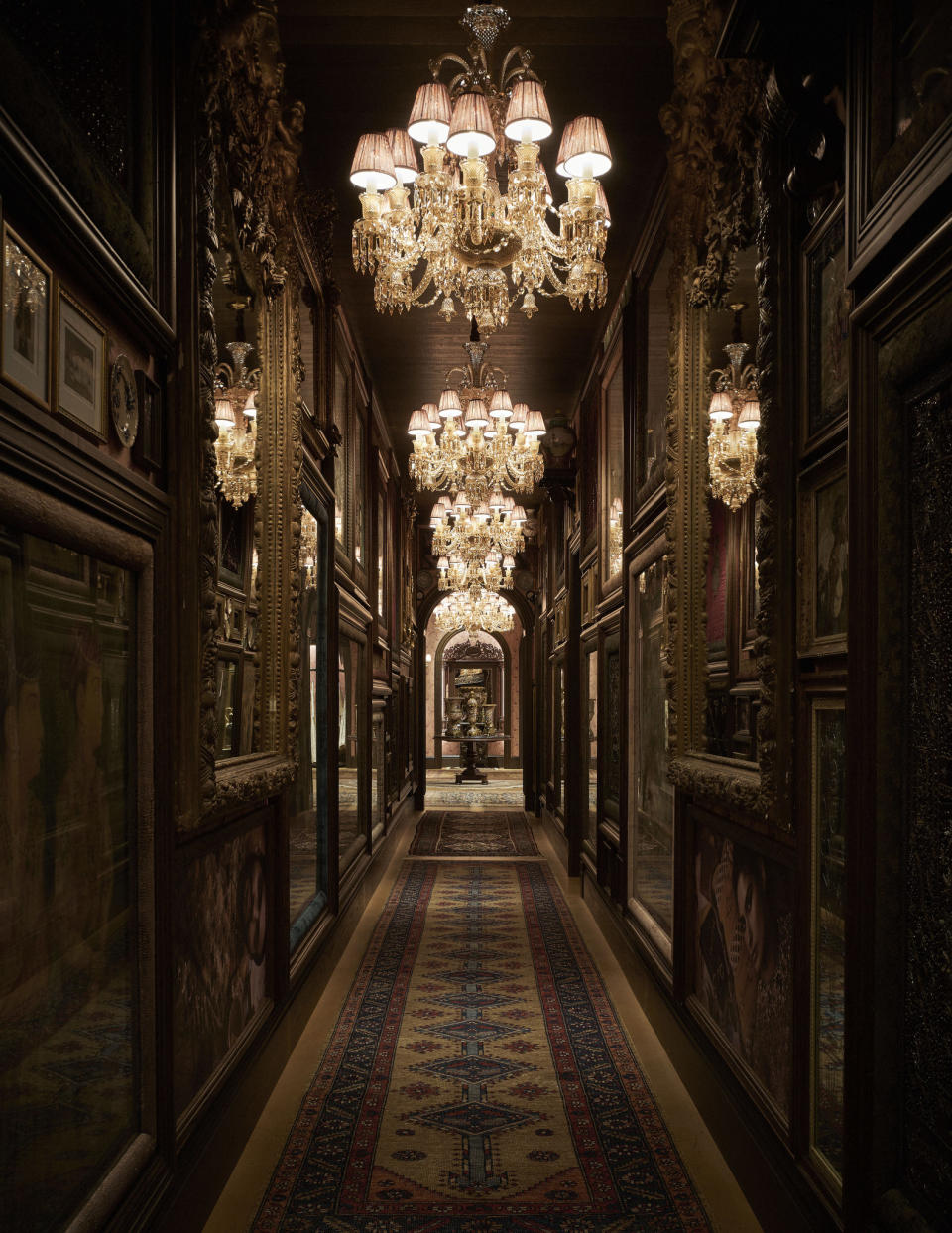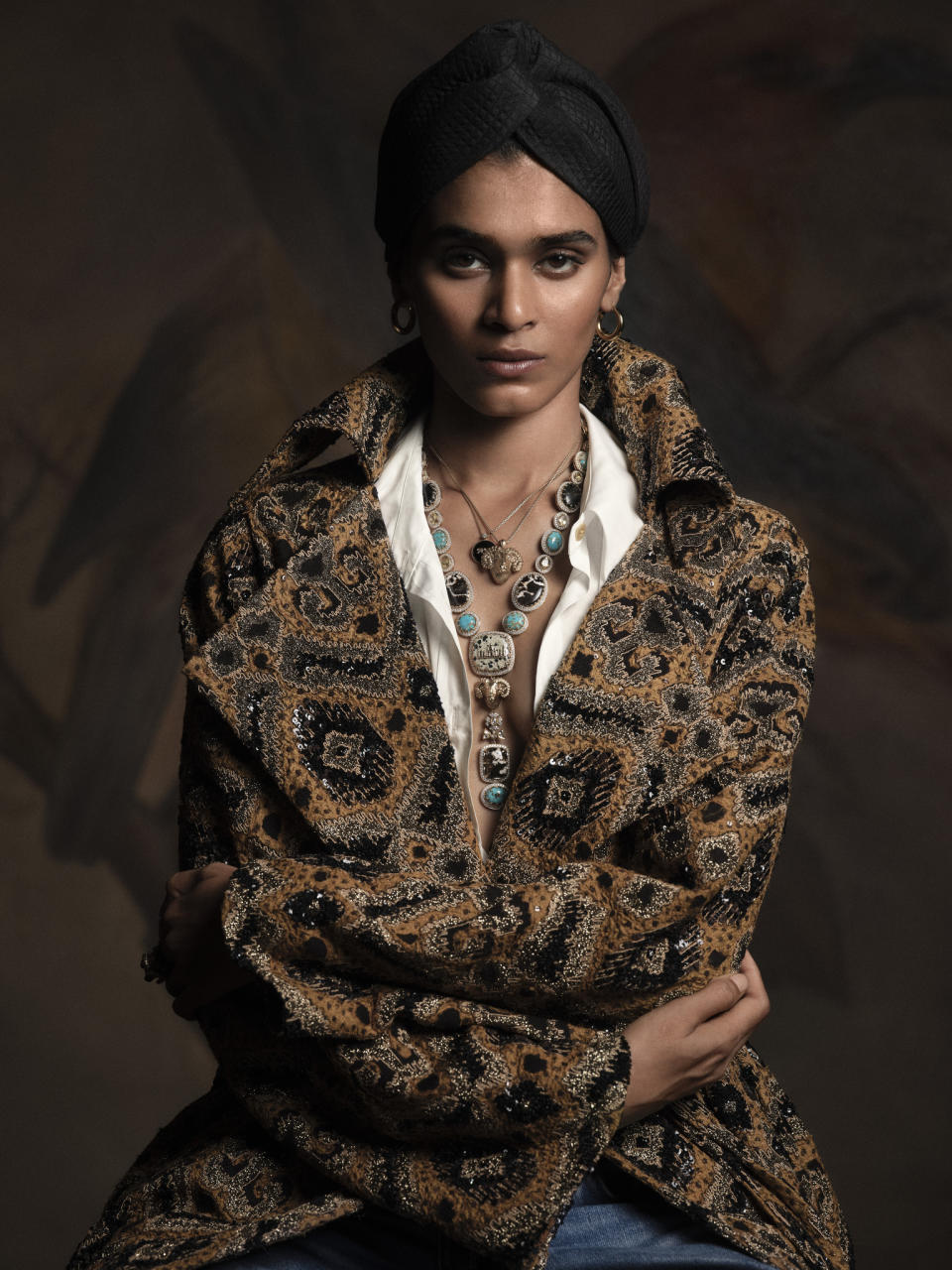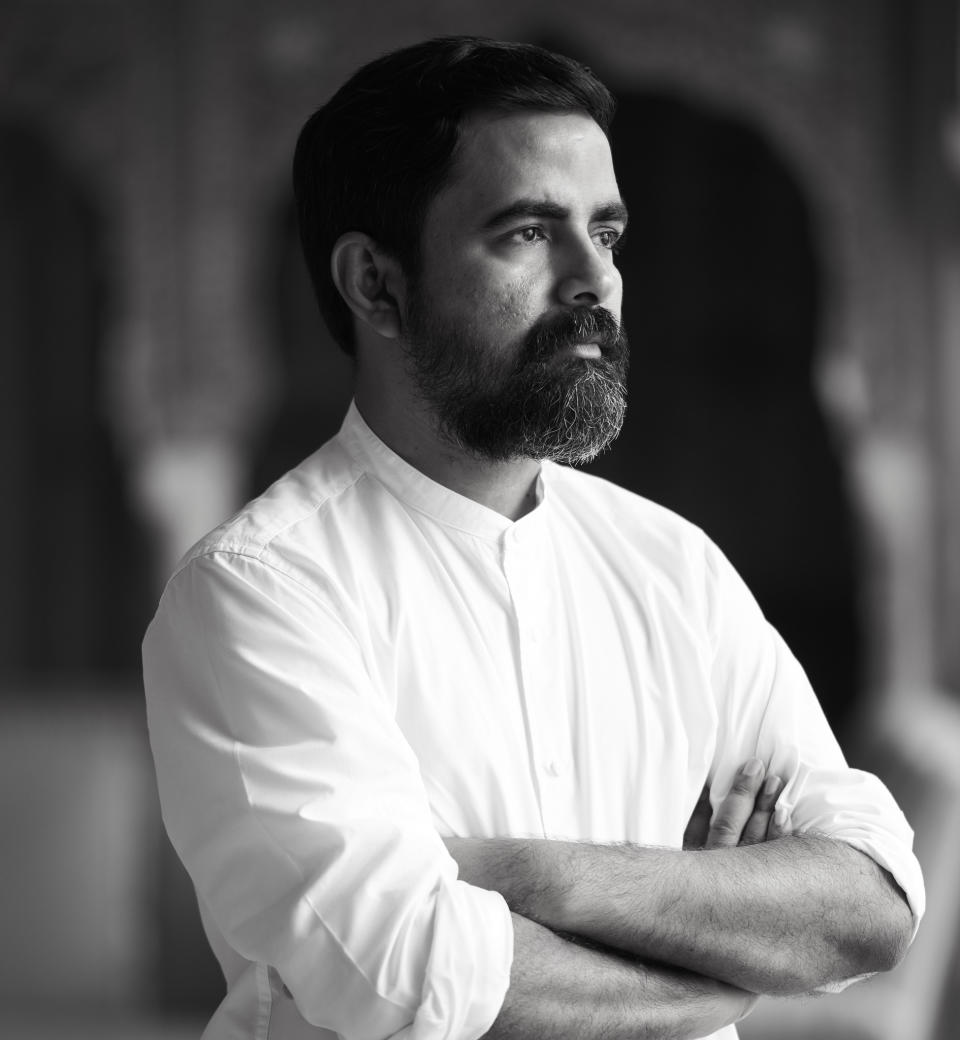Sabyasachi Heads West to Create a Global Luxury Brand

NEW YORK — However far-off the western end of Christopher Street is from the buzzier designer-dense shopping neighborhoods of Manhattan, that is where Sabyasachi is opening his first U.S. store.
A Brinks Security truck parked in front of the front door signaled not only the store’s address but also the value of the ultra-luxe jewels, fashion, accessories and antiques that adorn the 5,800-square-foot space. Floor-to-ceiling, there are thousands of items in the multiroom ornate space that magnifies Indian craftsmanship, heritage and design at every glance. With 22-foot ceilings, 31 chandeliers, oak-paneled ceilings and an abundance of Sabyasachi Mukherjee’s own designs, the store is bar-raising by New York City standards, but not by his.
More from WWD
With similarly scaled stores in Delhi, Mumbai, Kolkata and Hyderabad, as well as a jewelry store in Dubai at Bayt Damas, the 48-year-old Kolkata-based designer is intent on trying to build the first global luxury brand to come out of India.
During a walk-through of the palatial boutique, which opens to the public on Sunday, Mukherjee said the historic red brick building had caught his eye in early 2020 during a post-Sunday brunch saunter. “I knew the final product and what I would be building. The geography didn’t really matter. If you create something of consequence and beautiful, people find you. It is a little difficult in the beginning, but by word-of-mouth everything spreads.”
Having already ruled out Madison and Fifth Avenues due to hefty rents, Mukherjee initially thought the West Village location would also be beyond his budget but figured it was worth inquiring about. Two days later he’d inked a 15-year lease. Within a few months, the pandemic shut down most of Manhattan and delayed the build-out.
In the end it turned out to be a $9 million investment for a highly detailed selection that in some ways seems to reflect his prismatic approach to business and design. In an interview, Mukherjee weaves together such seemingly opposite subjects as counterfeiting, job security, aspirational branding, preserving craftsmanship, Western consumer spending and child labor. Even the starting point for the store’s over-the-top decor takes flight from two functional but decorative objects — a pair of parakeet-shaped faucets that he first spotted at the nearby hardware store P.E. Guerin, which can now be found in the store’s restroom. “Come, you must see,” he explained.
Admittedly how that lead to a chockablock boutique is rudimentary for the exacting designer whose subsequent selections and shopping churned on. “That’s the big problem with maximalism — it never ends,” he said, adding that lately he’s only been sleeping two hours a night.
But the insomnia isn’t due to his first U.S. outpost but the next opening — a 38,000-square-foot store in Mumbai that is in the works. Nonchalant about the store’s ornateness, he explained, “All of my stores look like this. I was very clear that if I didn’t have the bandwidth or the money, I wouldn’t do it.”

Typically, Sabyasachi stores break even by the seventh or eighth month in operation, the founder said. The stores’ interiors tend to depreciate in value after 10 years — compared to other designers, whose modern or technologically driven interiors start to depreciate in five years. “The problem with modernism is it gets dated very quickly,” he said.
More straightforward than boastful, he spoke repeatedly about his commitment to controlling the company’s ethos. Not wanting to sell his business when it was on the decline, as many designers do, he said he chose to sell a controlling stake — 51 percent — to Aditya Birla Fashion and Retail Ltd. last year, when Sabyasachi was most profitable. The one condition was that Mukherjee secured a 15-year deal to continue to control the brand. Bridal accounts for 60 percent of the overall volume, with accessories “growing quickly” and jewelry “taking shape,” according to the designer, who will debut beauty next year and expects that that will overtake all other categories due to its affordability.
For the financial year 2022-23, sales are expected to hit $45 million versus $35 million for the last financial year. Two U.S.-rooted collaborations are planned for next — one of which is fashion-related, he said.
Mukherjee said of his label, “It’s not a business that has great revenue in India, but it has great reverence. The copy [counterfeit] market of the brand in India is probably 500 times the size of our business. It’s in every city at every price point,” he said, adding that opening franchises — a frequent request — would be an easy fix but he prefers to keep things controlled. “When you build a luxury business, it’s like planting a flowering tree. It takes years to flower. You have to consistently water it.”
While shoppers in India favor head-to-toe designer looks, Sabyasachi said U.S. ones are expected to interpret the Indian culture in more of a high-low way, such as pairing one of his trenchcoats with a T-shirt and jeans. His belted $10,900 version is hand-embroidered tulle with patchwork and a handprinted and hand-quilted silk lining.
The designer chalks up his success to the fact that he doesn’t enjoy fashion too much. As an industry outsider who grew up in a middle-class family, where family values were prized, Mukherjee said his cousins often ask him who buys his extravagant clothes, and where are they going in them? Never able to answer the latter he said, “My favorite brand is Uniqlo,” gesturing toward his black corduroy chinos as proof.

No longer showing during fashion week or abiding by the industry’s seasonal calendar, he aims to design “modern heirlooms,” and the idea of building “beautiful things and dating them so quickly to satisfy human greed” baffles him. Maintaining a strong bottom line, repeat customers and heritage craft making are essential to not only employing 1,800 people, but improving their livelihoods. Estimating that “millions” are employed in India’s counterfeit market, Mukherjee doesn’t support it but understands its role in employment. “One hundred percent. When you create something beautiful and want to maintain its integrity, the most important thing is to maintain channel distribution. When you try to create that, the byproduct of that is people will fill up the gaps. I think it’s absolutely fine. It’s the nature of business and economics.…I feel great that we have created so much employment in an indirect way.”
Asked about the issue of child labor in India, Mukherjee described it as controversial, but said the West’s view is not always necessarily right.
“When a child wants to be an Olympic athlete, their parents or coach probably push them hard from the time they are six or seven. If a child needs to learn about a craft or a skill, the child probably has to learn when they are young because it can take years to master that skill before you become a refined craftsman. Then in his prime he can earn a very decent living for him and his family and live a life of dignity,” he said. “Often boundaries of vocational training and child labor are crossed, because what somebody perceives as child labor could also be considered vocational training. It’s a very blurry line. In India, a lot of craftspeople train their children from the time that they are very young. Education does not always have to begin at school. It can begin at home too. I’ve never really supported the education system in India because it teaches you to be myopic. You don’t broaden your horizons to do what you want to do. I quit school.”
He was also measured about India’s reliance on Russian oil. “There will always be a very big gap between optics and reality. While it is very important to be optically correct, it is also very important to protect people, who are dependent on you. India is a country with lots of people living on the verge of poverty. It becomes your responsibility to protect them. The choices are difficult for every leader because nobody wants war or to align with somebody who is creating a war. But…the choices that you have to make almost always comes from an act of responsibility.”
The road ahead will include a new incarnation of hosting a popular reality show about brides-to-be, a job he previously held for a decade in India. More about women’s empowerment than fashion, the plan is to pitch one to a streaming service. “It became one of the most popular reality shows. I used to often joke, ‘Twenty years of good fashion took me nowhere.’ Ten years of bad television took me all over the place.”
Pursuing fashion spared him the typical middle-class Bengali career path of being a doctor, engineer or “if you’re really bad, a lawyer,” he said. At 15, he ran away to waiter at a beachfront shack in Goya and later decided to pursue hotel management or fashion, despite being passionate about neither. Fashion’s craftsmanship won him over. “If somebody asked if fashion was my life’s calling, I would say, ‘Absolutely not. I’m 48 years old. I still don’t know what I want to do.’”

